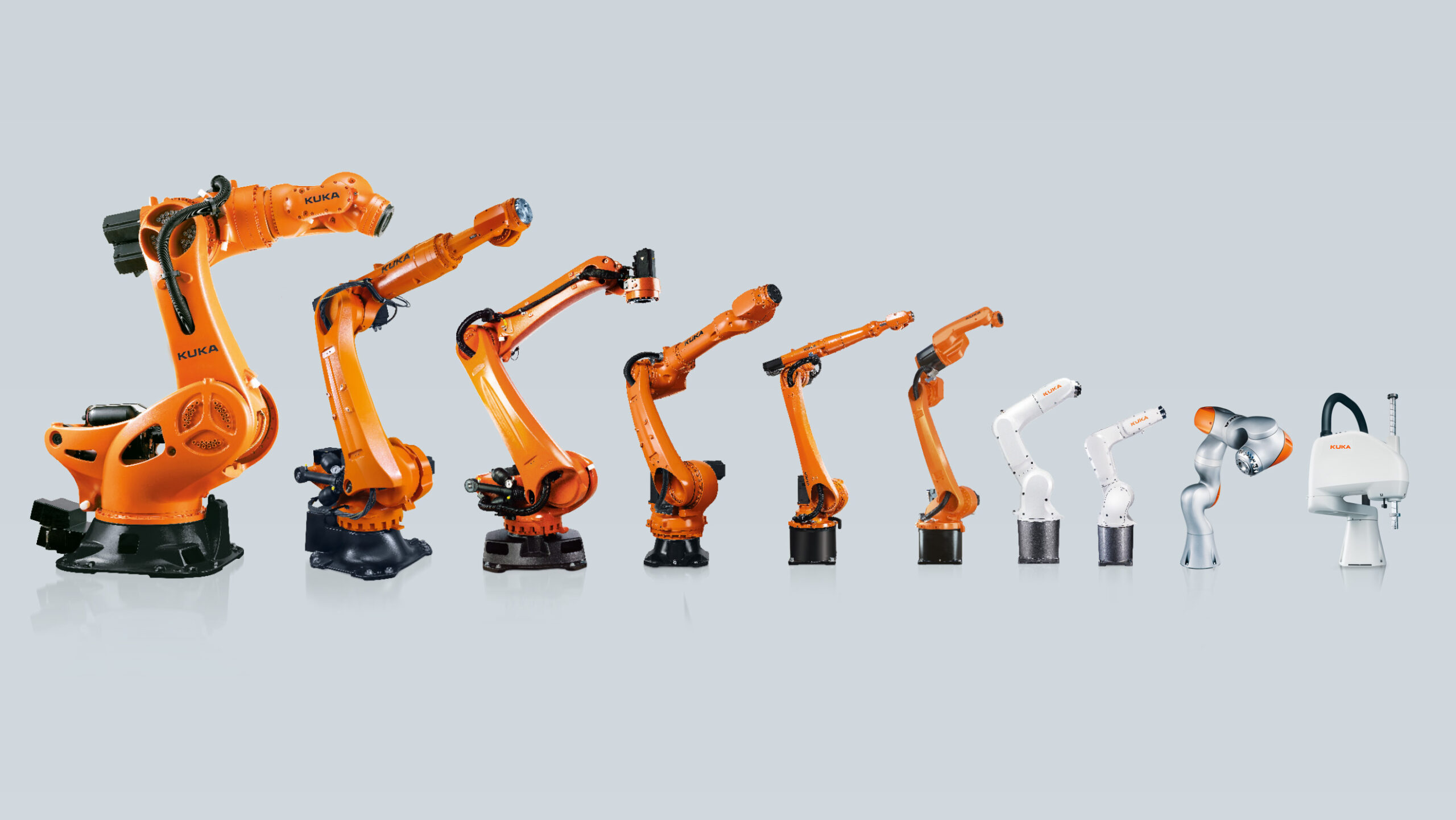Robot integration
The use of robots has evolved from focusing on the implementation of individual robot cells, integration of IT systems and production management, to bringing increased digitalization into the entire value chain, the introduction of artificial intelligence and the use of cobots – robots working side by side with humans.
The physical and digital worlds are merging.
Welcome to Industry 4.0 – also called the Fourth Industrial Revolution.
Industrial robots vs. collaborative robots
Overall, robots can be divided into industrial robots and collaborative robots – cobots. Both types has their entitlement and what makes sense depends on a closer analysis of the individual appplication or process. But common for them both, is that investing in robots generally creates growth in earnings and increases the need for skilled labor – in other words, the robots do not steal jobs, which is often feared, but instead they create more.
In Denmark and several other western contries, it continues to be more difficult to obtain labor for the more manual, monotonous and often abrasive work tasks. In addition, the Covid19 pandemic has highlighted how vulnerable it can be to be dependent on suppliers in other parts of the world. Both can be met with the implementation of robots in the company.
Industrial robots
Industrial robots are oftens used where large batches are produced at high speed and which requires high accuracy. The typical use of industrial robots includes product handling, packaging and labeling, palletizing as well as for assembly and disassembly, painting and welding.
Due to the high speed, the industrial robots can pose a safety risk to humans, which is why the robot requires shielding. In addition to the robot itself, the extent of safety measures, as well as the complexity of the programming of the robots and the integration with other equipment, entail a certain complexity to the project. On the other hand, the high speed and precision means that the volume of items that can be handled is high and the payback time is therefore typically very short.

Cobots – collaborative robots
Cobots – or collaborative robots – are a safe and reliable work force, they are easy to install, easy to adjust and have a fast payback time. Your company can therefore produce safer, faster and more efficient at a price that can compete with foreign products produced with a cheaper labor.
Collaborative robots are designed to work side by side with humans, without any kind of safety measures. However, it always requires a thorough safety assessment and the overall solution must always be CE marked in accordance to current regulations.
When cobots collaborate with humans, they will need to work at a slower pace than industrial robots. They can be implemented in such a way that they work faster when there are no people nereby, and automatically slow down when a person enters the work zone, thereby further increasing the productivity. A cobot will typically be installed in a flexible setup that allows the operator to reprogram it to handle other items in the same setup, or moved to a completely different place in production where it can be used for other tasks. Learn more about cobots here.
Partners
We work toegther with a number of recognized and specialized partners, who each excels within their field. Read more about our partners here.
References
We have implemented solutions within automation and process optimization for a large number of customers, including Novo Nordisk, FujiFilm and Biogen.
News
Follow the latest news and get the latest knowledge about technology, insights from cases, invitations to events and news about relevant subjects within the industry.

